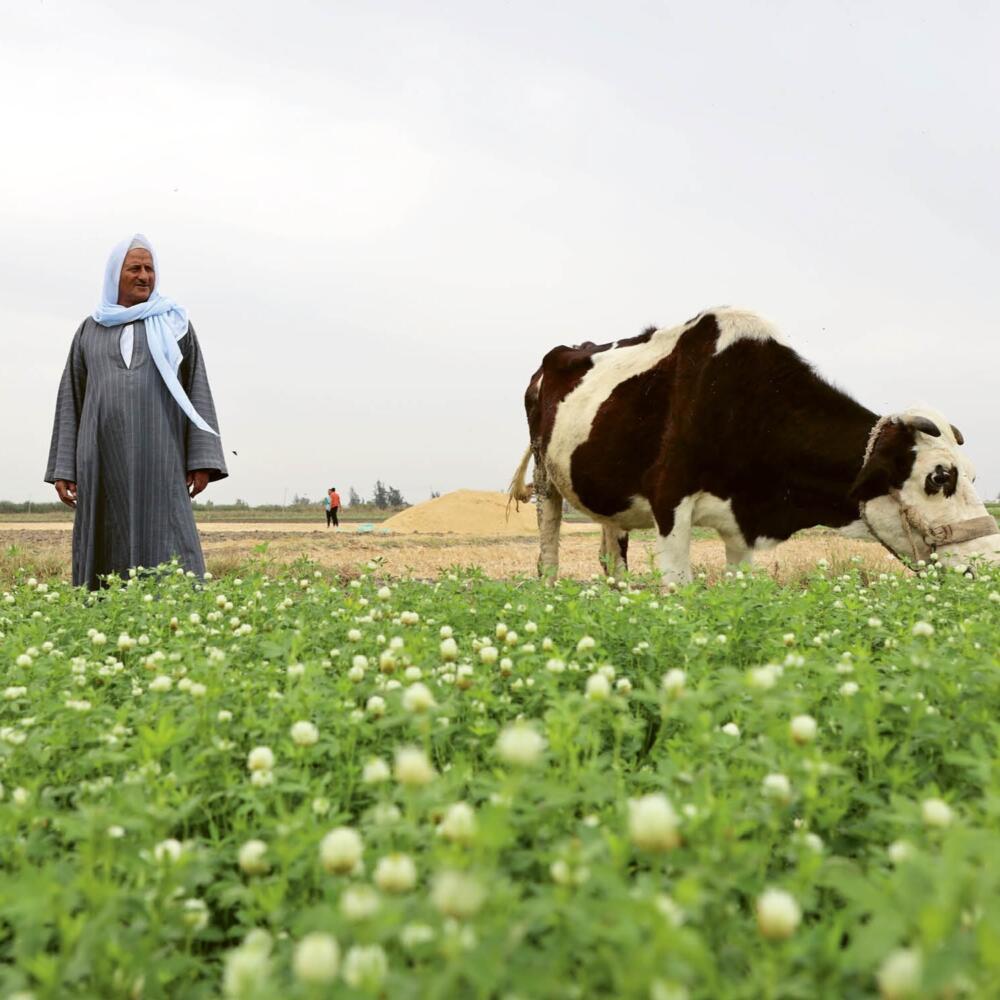Greening the Desert: Between Vision and Foresight
The Goetheanum warmly invites everyone to “Greening the Desert” on October 29, 2025. The desert is and has life that must be respected: this theme day will bring together practice and reflection. Visitors can experience projects from the Sahara region up close and learn how agriculture, culture, economics, and politics are intertwined. “Greening the Desert” is a collaboration between Culturescapes 2025 Sahara, the Section for Agriculture, Sekem, and Agroecology Works. Anna Storchenegger spoke with Ueli Hurter, co-leader of the Agriculture Section, and Jurriaan Cooiman, founder and director of Culturescapes.
Anna Storchenegger: The title of the theme day, “Greening the Desert,” sounds optimistic, almost like a promise. What is the title meant to convey? Is it really possible for deserts to become fertile land again?
Ueli Hurter: I would say quite simply: yes, it’s possible. We have very concrete examples of this. The most important and best-known is Sekem, the anthroposophical initiative in Egypt, whose representatives Helmy Abouleish and Buthaina Elhoseiny will be guests at the theme day. At first, yes, there was nothing there but desert, sand, and heat—no life. And today, after almost five decades, we see fertile land. Not only in an ecological, agricultural sense—that is, with growing plants—but also in a comprehensive social and cultural sense. In 1977, the founder, Ibrahim Abouleish, had a vision of turning the desert into a place of life. But he didn’t realize this vision alone; many people embarked on this path with him. Today, it’s an incredible experience to be there: you see trees, plants, animals, people, schools, a clinic, companies producing food, textiles, and medicines. Life is incredibly more dense, rich, and much more colorful than one could ever have expected. There is a special power that comes from this transformation. One could even say that if it is possible to create a place where life flourishes in an environment as hostile to life as the desert, that is a cultural achievement that is perhaps even greater than what we experience in Central Europe.
So you’re not just talking about agriculture in the narrow sense but about a whole way of life?
UH: Exactly. When you’re in Sekem, you sense that it’s not just about fields and harvests. It’s about people—people being able to live together, children receiving an education—and it’s about art, music, and spirituality all having a place. Biodynamic agriculture is the foundation, but much, much more comes out of that. That is the spirit behind “Greening the Desert.”
Hazoua is another fascinating example. It is located in Tunisia, right on the border of Algeria, on the edge of the Sahara. When you drive there, you experience a completely desert-like location—stones, rocks, dust, no water. But Hazoua itself is an oasis. The main product is dates—tall palm trees typical of oases. Thanks to the initiative of a man from Switzerland, they began to cultivate these palm trees a few years ago according to biodynamic principles. Today, the Demeter dates are processed and exported to Switzerland. The exciting thing about this is that it’s not an “artificial” project but one that lives in direct connection with the community. Sadok Saidi has made a decisive contribution to this development, and his son, Salah Saidi, will present the Hazoua oasis project at the Goetheanum.
Jurriaan, what is your connection to the desert and the title “Greening the Desert”?
Jurriaan Cooiman: I’ve traveled through the Sahara several times, from multiple directions—from Egypt to Morocco to Algeria to sub-Saharan Africa. To answer the first part of your question: The Sahara is described as “degraded land,” but that contradicts what has existed there for millennia—life. Of course, it’s not Central European life with intensive agriculture, but there are nomadic peoples, animals, and diversity. We tend to see things only from our own perspective. But there’s also a meta-level. In 2021, we addressed the topic of the Amazon as part of Culturescapes. There’s an amazing connection between these two places: clouds of Sahara dust travel at high altitudes to South America, where they rain down and bring minerals and trace elements that make the Amazon fertile. Millions of tons of Saharan dust are transported in this way every year. This is a mega ecological cycle that connects two continents. This biological basis shows us that interventions in ecosystems—whether geoengineering or the use of water reserves—can always have negative repercussions.
This text is an excerpt from an article published in the (online exclusive) Goetheanum Weekly. You can read the full article on the website. If you are not yet a subscriber, you can get to know the Goetheanum Weekly for 1 CHF./€.
Image Field workers in a field of basil. Photo: Samuel Leon Knaus

